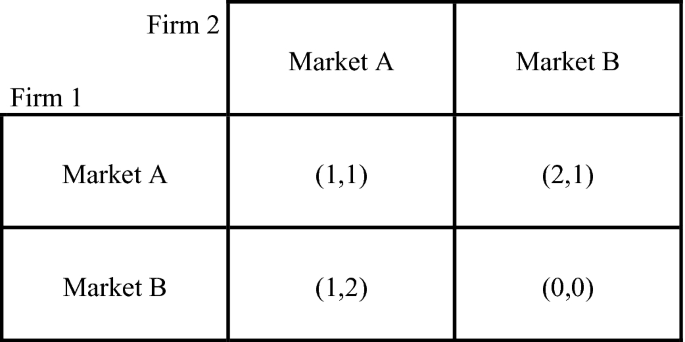Abstract
Many of the world’s most outstanding theater plays derive their dramatic effect from the fact that the hero does not follow the path of action that corresponds to what the audience considers the dominant strategy. This holds for Brutus in Shakespeare’sJulius Cesar as well as for Schiller’s Wallenstein, both characters who hesitate to grab power and thereby make use of the possibility to escape their fate. However, if players do not have dominant strategies and there are more than one Nash equilibria so that players control alternative equilibrium strategies, then the decision problem becomes even more challenging. Selten’s trembling hand perfectness can be applied to select equilibrium strategies which are still adequate even when it is assumed that the other players deviate from their equilibrium strategies in the form of small ε trembles. Often this reduces the set of Nash equilibria and in some cases a singleton is left. In contrast to this operation, the concept of rationalizable strategies leads to an expansion of the set of justifiable strategy choices. A strategy x is rationalizable if it is a best reply to strategy y and y is a best reply to a strategy z. In a Nash equilibrium (x, y), x and y are mutually best replies. It is immediately understood that Nash equilibrium strategies are rationalizable, but not all rationalizable strategies are Nash equilibrium strategies.
Access this chapter
Tax calculation will be finalised at checkout
Purchases are for personal use only
Notes
- 1.
- 2.
- 3.
In fact, the relationship u1(s11) > u1(s12) is sufficient to demonstrate that (s12, s22) violates THP. Note that u1(s11) = ε1 + (1 − ε)0 = ε and u1(s12) = ε0 + (1 − ε)0 = 0.
- 4.
Matrix 6.2Market Congestion Game.

- 5.
We find a related modeling in a somewhat neglected note by Sherman and Willett (1967). One of the consequences of their analysis is that the more potential suppliers to the market the more likely it is that the market remains idleSsee Holler (2018: 77ff) for an extended analysis of this model). The Market Congestion Game in Matrix 6.2 demonstrates that two potential suppliers can be too many from the point of view of costumers on markets A and B.
References
Bernheim, D. (1984). Rationalizable strategic behavior. Econometrica,52, 1002–1028.
Holler, M. J. (2018). The economics of the good, the bad, and the ugly: Secrets, desires, and second-mover advantages. London and New York: Routledge.
Pearce, D. (1984). Rationalizable strategic behavior and the problem of perfection. Econometrica,52, 1029–1050.
Selten, R. (1965). Spieltheoretische Behandlung eines Oligopolmodells mit Nachfrageträgheit. Zeitschrift für die gesamte Staatswissenschaft, 12, 301–324 and 667–689.
Selten, R. (1975). Reexamination of the perfectness concept for equilibrium points in extensive games. International Journal of Game Theory,4, 25–55.
Sherman, R., & Willett, T. D. (1967). Potential entrants discourage entry. Journal of Political Economy,75, 400–403.
Author information
Authors and Affiliations
Corresponding author
Rights and permissions
Copyright information
© 2020 Springer Nature Switzerland AG
About this chapter
Cite this chapter
Holler, M.J., Klose-Ullmann, B. (2020). Which Strategy to Choose?. In: Scissors and Rock. Springer, Cham. https://doi.org/10.1007/978-3-030-44823-3_7
Download citation
DOI: https://doi.org/10.1007/978-3-030-44823-3_7
Published:
Publisher Name: Springer, Cham
Print ISBN: 978-3-030-44822-6
Online ISBN: 978-3-030-44823-3
eBook Packages: Economics and FinanceEconomics and Finance (R0)


